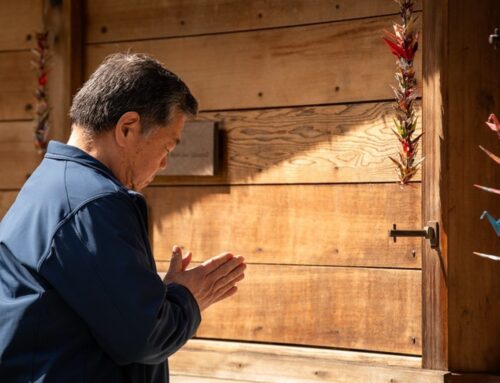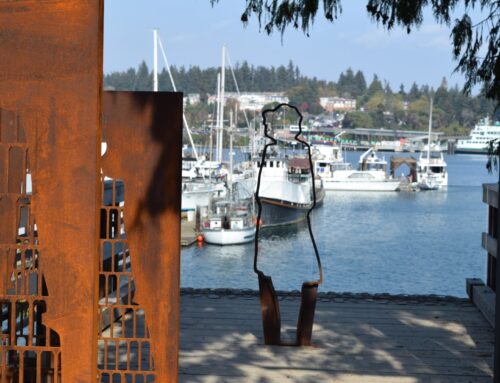Visitation
20,300 Walk-in Visitors
86 Private Tours
1,778 Private Tour Participants
Over the past 12 months, the Exclusion Memorial has welcomed more than 20,300 visitors, a 25% increase over our most recent counts. This boost in walk-in visitation is thanks in large part to our dedicated volunteer, Carolyn Hart, who has increased our presence on the site substantially. Carolyn not only greets visitors but also manually tracks their numbers and records where they are from, with visitors ranging from local Bainbridge Island residents to travelers from across the U.S. and around the world. Additionally, an on-site ranger or intern is present from March through November, offering support and information to visitors several days a week.
Our free educational tour program continues to thrive, welcoming K-12 schools from across the Pacific Northwest, university students, diverse community and professional organizations, and families. These tours provide an enriching experience, sharing the history of the Exclusion Memorial and the stories of those affected by the Japanese American incarceration during World War II. For those interested in scheduling a private educational tour, we now offer an easy-to-use online request form available on our website: bijaema.org/visit/request-a-tour.
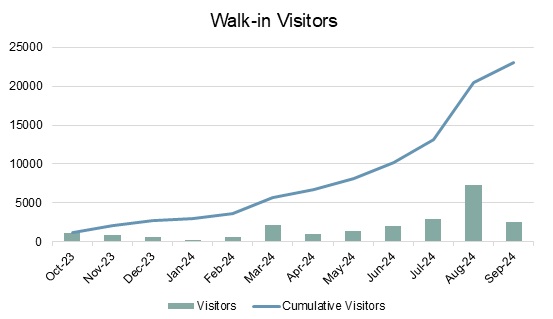


Expanding Our Geographic Reach and Audience Diversity
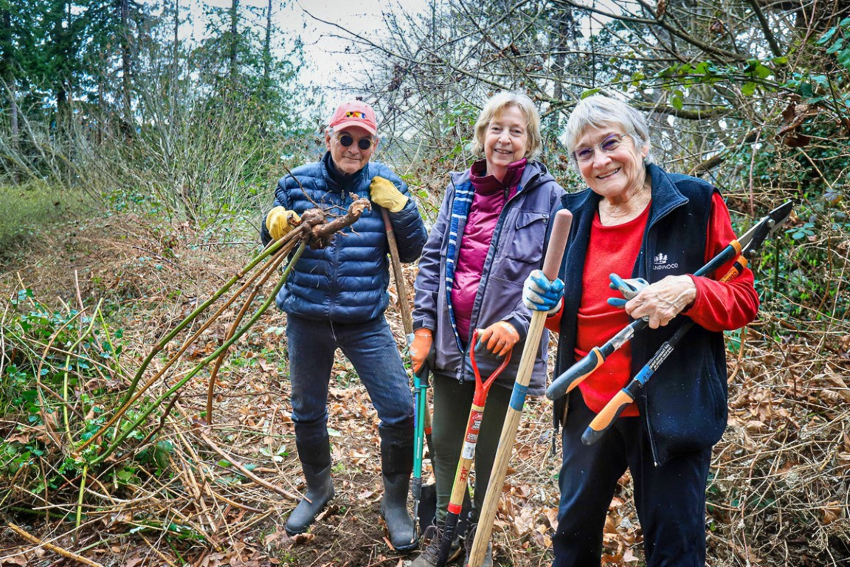
Day of Remembrance 2024
This year, our outreach efforts expanded significantly, connecting us with new audiences both locally and globally. Locally, our support base remained strong, highlighted by the annual Day of Remembrance Work Party, where nearly 100 volunteers, with the support of the Bainbridge Island Metro Park and Recreation District, worked to maintain the Memorial grounds. This year, the event was covered by a film crew from NHK, Japan’s national public broadcaster, which introduced our story to Japanese viewers in two televised segments. This broadened international awareness of the Japanese American Exclusion, a chapter of history that remains largely unknown to many in Japan.
We also strengthened our partnerships with educational and international organizations to expand our reach. The Foundation for International Understanding Through Students (FIUTS) once again included the Memorial in its educational program, introducing students from a diverse array of countries, including Angola, South Africa, Armenia, Turkey, and Japan to the Exclusion story, thereby fostering meaningful cross-cultural connections. Locally, we hosted diverse groups, such as the Olympia Diocese of the Episcopal Church, the Daughters of the American Revolution, Race Amity, and staff from Olympic National Park. Each of these groups departed with a deeper appreciation for how the story of the Exclusion resonates with current events from a range of perspectives.
Launching New Initiatives
This year marked the launch of several new initiatives aimed at broadening our impact:
- Omoiyari: A Song Film by Kishi Bashi. This film screening took place on March 30th and was followed by a panel discussion focused on innovative storytelling through the lenses of Place, Food, and Justice. Presenters included Robyn Achilles, Executive Director of Friends of Minidoka, and Lorraine Bannai, Professor Emerita at Seattle University School of Law and Director Emerita of the Fred T. Korematsu Center for Law and Equality.
- U.S.-Japan Leadership Program Excursion: We hosted 50 influential Japanese and American leaders from various fields—ranging from disaster response, to journalism, finance, and the arts—who explored the Memorial and its historical significance.
- Asian and Pacific Islander Americans in Historic Preservation National Forum: We welcomed 150 conference attendees to the island, featuring educational sessions at the Pocock Rowing Center, a tour of the Memorial, and a visit to the Filipino-American Hall to view the Indipino exhibit.
Strengthening Partnerships for Long-Term Sustainability
At the heart of our growth and sustainability are the strong partnerships we continue to cultivate. This year, we deepened our collaboration with members of the Japanese American Confinement Sites Consortium (JACSC), working alongside Friends of Minidoka and the Heart Mountain Foundation to share knowledge and resources that enhance our educational and preservation efforts. Through JACSC, we’ve gained valuable tools and insights from organizations who share our challenges.
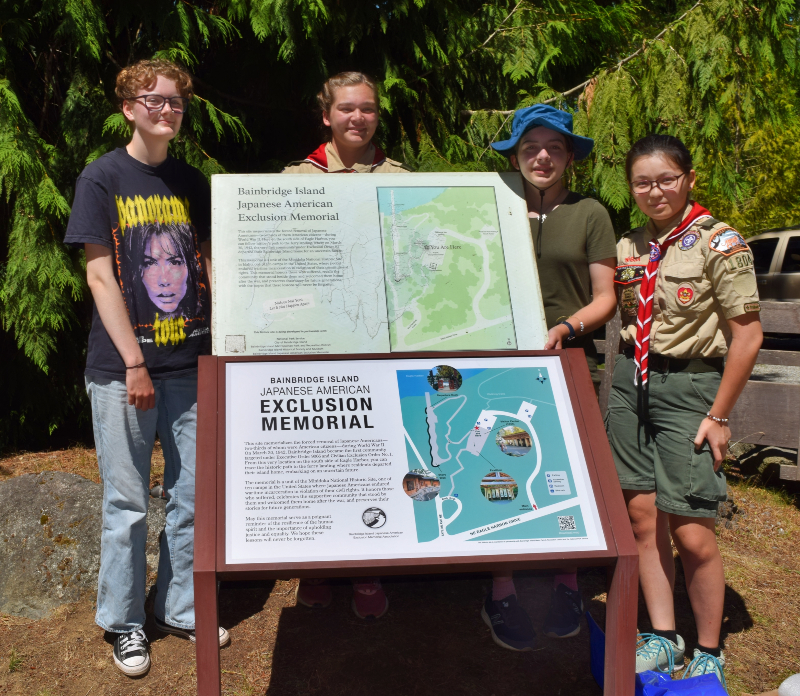
Mia Espiritu (rt) and Members of Troop 1804
Locally, we were honored to partner with Eagle Scout candidate Mia Espiritu, a student at North Kitsap High School, who led a project to design, fabricate, and install a new waypoint sign at the Memorial entrance. Mia, along with Troop 1804, not only installed the sign but also contributed to the Memorial’s living legacy by stringing and hanging origami cranes along the Memorial Wall.
We are immensely grateful to our community partners, whose ongoing support enables us to effectively achieve our mission:
- BI History Museum – interpretive planning
- BI Japanese American Community – docents and interpretive planning
- BI Metro Park and Recreation District – Memorial maintenance and support for the Day of Remembrance work party
- BI Museum of Art – venue for screening Omoiyari: a Song Film by Kishi Bashi
- BI Rowing – venue for hosting AAPIAHiP sessions
- Filipino and Indipino Communities of BI – access to Filipino-American Hall and interpretive exhibit
- Japanese American Confinement Sites Consortium – education and information-sharing
- National Park Service – interpretive staff and planning support
These partnerships play a crucial role in amplifying the efforts of our small organization and ensuring our ability to grow and evolve our impact.

